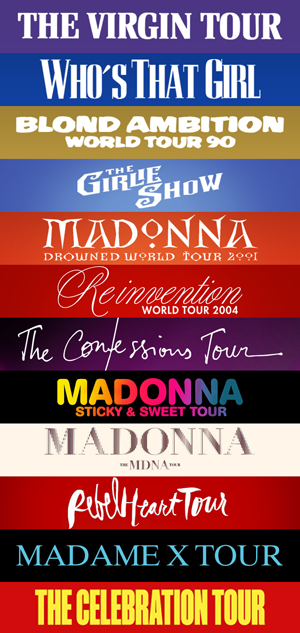Shep Pettibone’s First Interview in 20 Years: On Making a Madonna Classic
To celebrate the 25th anniversary of Vogue reaching #1 on the Hot 100 singles chart, Billboard‘s Keith Caulfield reached out to dance legend Shep Pettibone, the song’s co-producer and co-writer, for his first interview in 20 years.
Billboard talked to Pettibone, of course, about the genesis and making of Vogue, but also his later work with the Madonna on The Immaculate Collection and Erotica, the sampling lawsuit against him and Madonna over Vogue, and why he stepped away from the music business nearly 20 years ago.
The interview is now online at Billboard.com. Here are a few excerpts:
Keith Caulfield: You know I am amazed that it’s been 25 years since “Vogue” hit No. 1 [on the Billboard Hot 100]. I don’t know if you sort of contemplate that sort of stuff very often. Does it even register that it’s been that long since the song has been out?
Shep Pettibone: It doesn’t, really. First of all, it seems like the song that never ends. I mean, you’re forever hearing it. It’s always on a radio somewhere, or being played somewhere, you know, in a club. It’s still a dance floor filler after all these years too, which is amazing.
KC: It continues to live on, through covers and interpolations, and so forth. Certainly that must be very nice to know that something you’ve made continues to have a long life.
SP: Yeah, exactly. But no, it doesn’t feel like 25 years. It’s wild.
KC: Let’s take it back, so we can explain to people how the song came about. So we’re going to take a historical journey backwards in time. I don’t think most people understand how the song actually came together. My understanding is that Craig Kostich asked you to create a song for Madonna. And then it was going to be a b-side for Keep It Together …I’m not sure exactly how the song originally came about, so tell me exactly what happened.
SP: I was kind of, I guess at that point, Madonna’s favorite remixer, so I was remixing all of her songs. I did the You Can Dance album with her, and I was doing a lot of additional production on the songs as well. For instance, Like a Prayer, she chose my single version after I had done what I did on that.
KC: And the most popular versions of Express Yourself are your remixes of the song.
SP: The remix was a total reproduction and I totally rewrote the music. And I really started from scratch with Express Yourself. And I think she was really impressed with that and she really… liked it. And, you know, the label liked it… She actually did the video to the album version, and then they synced my version to the video. So if you watch the video of Express Yourself, you see the horn players on the carousel, but there’s no horns playing, because I took those out.
KC: Did she or Warner ever ask you to contribute anything else to the I’m Breathless album? Because that’s the only song of yours that’s on that album.
SP: No, because in general the album was done. She had done that album with [Stephen] Sondheim and whoever…
KC: Patrick Leonard and some other folks, yeah…
SP: …So it was done. So they just kind of like tacked Vogue on, so to speak.
KC: It’s funny how such an iconic song came from a one-off. Something that wasn’t part of a larger project, but just sort of a “Let’s try this and see what happens.” And then it turns into one of the most memorable dance songs ever.
SP: It was Craig that came to me, and he’s like, “You have a budget of $5,000.” Which, you know, really isn’t a lot because you have to pay the studios, you have to pay engineers, musicians, et cetera, et cetera. So, the whole thing was really done on a shoestring budget. Where we recorded it, and where she actually sang the vocals was in somebody’s basement on West 56th Street, I think. [Laughs.]
KC: So for the song, you had a budget of $5,000?
SP: Right.
KC: And she recorded the vocals in a basement?
SP: Yes. Somebody had made a home recording studio, and I remember they had converted a closet that had bi-fold doors on it. They had put a sliding glass door on it, and that was the vocal booth.
KC: Keeping it really underground there.
SP: [Laughs.] Totally! Totally. It was underground.
KC: That’s kind of hilarious that it only cost $5,000.
SP: I remember the multitrack [recording machine]… it was a 24-track multitrack, but I think only a few of the cards were working right. Because it was a secondhand machine. So, to record a track you’d have to pull out, slide out a card, and then move it to the next track to be able to record the next track. And so on, and so on. It was that low-budget.
Read the full lenght, intriguing, revealing interview by Keith Caulfield with Shep Pettibone at Billboard.com.







